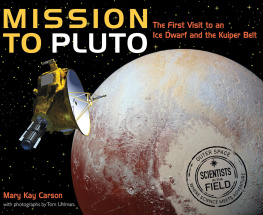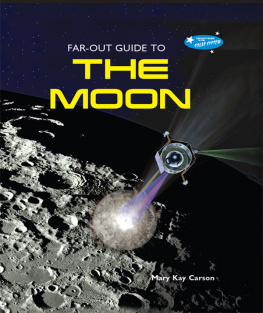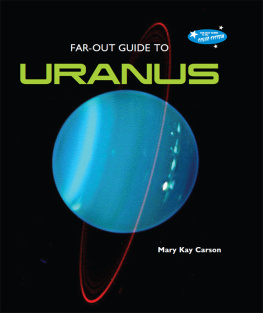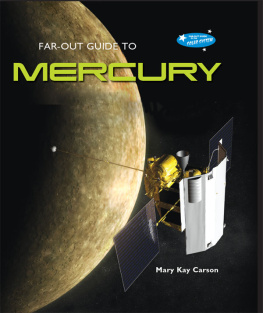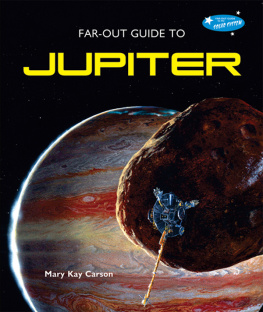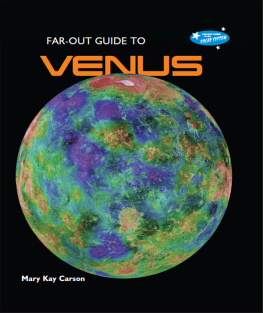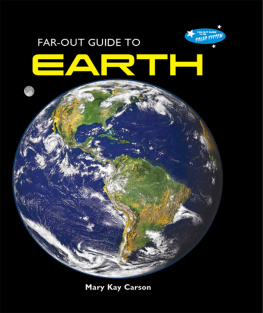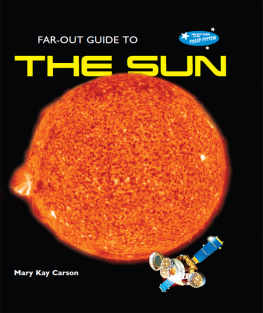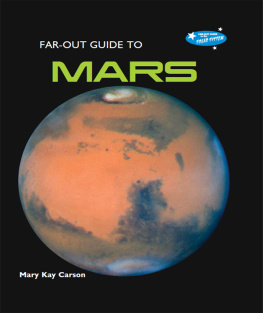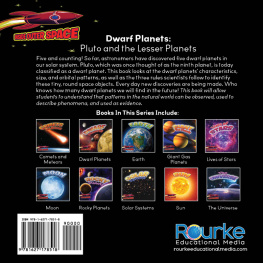
DWARF PLANETS OF OUR SOLAR SYSTEM
PLUTOIT USED TO BE OUR NINTH PLANET. But scientists have reclassified Pluto as a dwarf planet. So what exactly is a dwarf planet? How do scientists study and classify them?
Learn about the amazing missions, the dedicated scientists who plan them, and many far-out facts about the dwarf planets Pluto, Eris, Makemake, Ceres, and Haumea. All the facts you need, and lots more, are included in this up-to-date book.
The Far-Out Guide to the Solar System series provides valuable information about the solar system, its planets, and mankind's quest in exploring them. This series is an excellent resource for young scientists and amateur astronomers.
Bahram Mobasher, PhD, Series Science Consultant
Professor of Physics and Observational Astronomy, University of California, Riverside
About the Author
Award-winning author MARY KAY CARSON has written many nonfiction books for young people and their teachers. In 2009, she received the American Institute of Aeronautics and Astronautics Children's Literature Award.
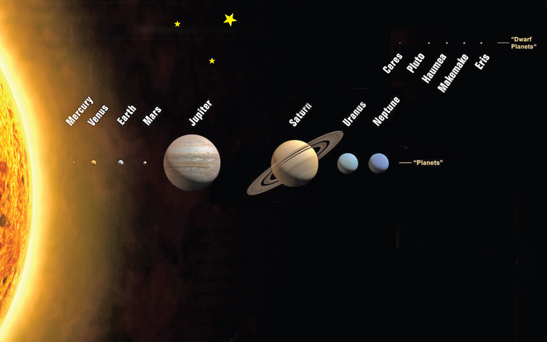
Image Credit: International Astronomical Union/Martin Kornmesser
The eight planets and five dwarf planets of our solar system are shown. Note that sizes are to scale, but distances from the Sun are not.
Pluto gets so cold that sometimes its air freezes and falls as snow. Wow! How do we know this? Scientists use special telescopes to see Plutos atmosphere. You will learn lots more far-out facts about Pluto and other icy worlds in this book. Just keep reading!
Pluto was once called the ninth planet. In 2006, scientists switched Pluto to a new category called dwarf planets. Neptune may now be the outermost regular planet, but it is not the last stop in the solar system. Dwarf planets like Pluto are still fascinating worldsjust small ones.
While Pluto is no longer the ninth planet, it is also no longer alone. Astronomers have discovered more worlds very much like Pluto. As telescopes have improved, these faraway worlds out past Pluto have come into view. It is like seeing a city from far away. At first you see only skyscrapers. But as you zoom in with binoculars, all sorts of buildings begin to appear. The more you look, the more you see. The more astronomers look, the more they find.
One of the newly found dwarf planets, called Eris, is a bit bigger than Pluto. Another, called Haumea (how-MAY-ah), is oval-shaped and has two tiny moons. Dwarf planet Makemake (MAH-kay-MAH-kay) is reddish and has no known moons. Pluto and these other fascinating icy dwarf planets orbit out on the edge of the solar system. They are in the Kuiper belt, a ring of rocky hunks of ice out past Neptune. Many Kuiper belt objects (KBOs) are small, but others are large. The largest KBOs are dwarf planets. Pluto is a member of a large family of cold, icy KBO worlds.
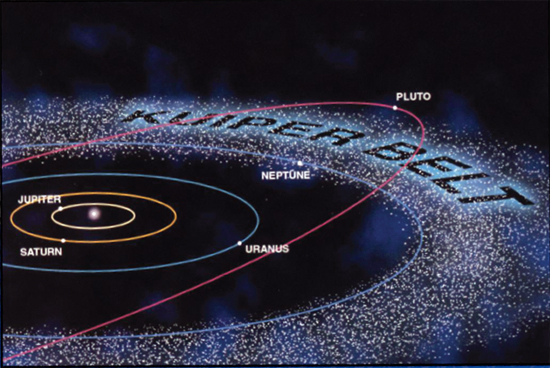
Image Credit: NASA
The Kuiper belt is a band of icy, rocky objects in the outer solar system (past Neptune). Dwarf planets Pluto, Eris, Makemake, and Haumea are large Kuiper belt objects.
FAR-OUT FACT
All the dwarf planets, except Ceres, are Kuiper belt objects. Ceres is instead an asteroid, orbiting with other asteroids between Mars and Jupiter. At nearly 1,000 kilometers (605 miles) across, Ceres is the biggest asteroid by far. But it is the smallest dwarf planet. When Giuseppe Piazzi discovered Ceres in 1801, he called it a planet. But as other rocky worlds were found near Ceres, it became the largest member of a newly created group of objects called asteroids. In 2006, big round Ceres was reclassified as a dwarf planet.
FAR-OUT FACT
Dwarf planets share characteristics with the eight regular planets. Planets and dwarf planets orbit the Sun, are not moons, and are big enough to be round. Gravity pushes all big objectsstars, planets, moonsinto round balls, or spheres. Why? Gravity pulls all objects in toward their centers. Planets and stars have a lot of gravity. It squashes them into the only shape in which every part is pulled in as close to the center as possiblea sphere. So how are dwarf planets different from the eight regular planets? Dwarf planets are surrounded by other small objects similar to themselves. Their paths around the Sun are crowded with objects like asteroids or hunks of ice. The gravity of very large objects, such as regular planets, sweeps their paths clear of other similar objects. So far, astronomers have named five dwarf planets: Pluto, Eris, Makemake, Haumea, and Ceres.
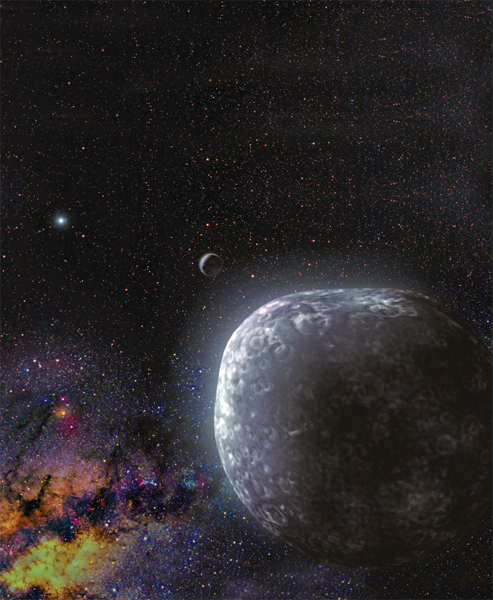
Image Credit: NASA and G. Bacon (Space Telescope Science Institute)
This is an illustration of a Kuiper belt object. Scientists believe there could be 100 billion Kuiper belt objects (KBOs) larger than a kilometer (0.6 mile) wide.
In 1928, a Kansas farm kid named Clyde Tombaugh sent a letter to a famous observatory. The twenty-two-year-old put his drawings of Mars and Jupiter in the envelope, too. Tombaugh had drawn the pictures of the planets while looking through his homemade telescope. The letter impressed the observatorys directorso much that he offered the young man a job. Tombaugh jumped at the opportunity to work for the Lowell Observatory in Arizona. Becoming an astronomer would be a dream come true.
Clyde Tombaughs job at the observatory was to look for a planet out past Neptune. Astronomers had been looking for this so-called Planet X since before Tombaughs birth. Planet hunters search the skies for moving points of light. Because planets are so much closer to us than stars are, they move across the unchanging background of stars. Tombaugh took photographs of the night sky through the observatorys new telescope. Then he carefully searched the photos for a moving Planet X.
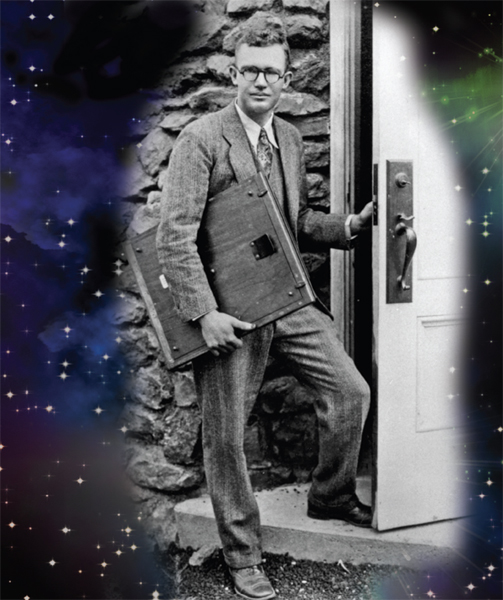
Image Credit: Lowell Observatory Archives/JHUAPL
Clyde Tombaugh was a twenty-four-year-old amateur astronomer when he discovered Pluto in 1930.
On February 18, 1930, Tombaugh was comparing different photographs of the same patch of night sky taken days apart. The background stars were in the constellation of Gemini. Where all the white dots stayed in the same place in the photographs, Tombaugh knew there was no planet. But then he saw a dot of light shift its place from one photograph to another. The white speck moved a little to the left in the later photograph. It was a planet far past Neptune. Clyde Tombaugh went and found his boss. I have found your Planet X, he said. Tombaughs discovery was front-page news around the world. When an eleven-year-old English girl heard about it, she suggested the name Pluto. Pluto is the ancient Roman god of the dark underworld.
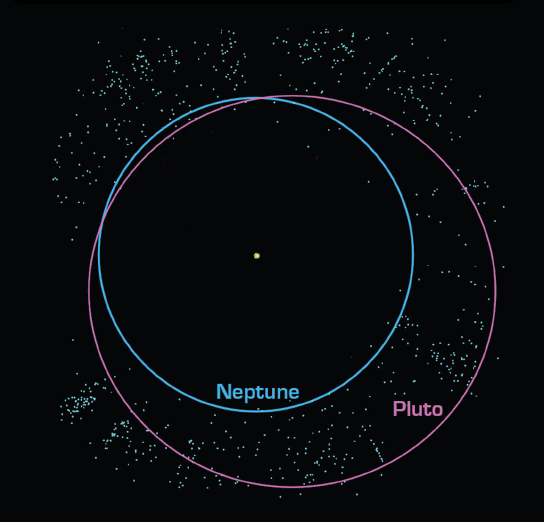
Image Credit: Lunar and Planetary Institute
Notice Plutos orbit. It takes the dwarf planet inside Neptunes path during part of its journey around the Sun.
Next page


